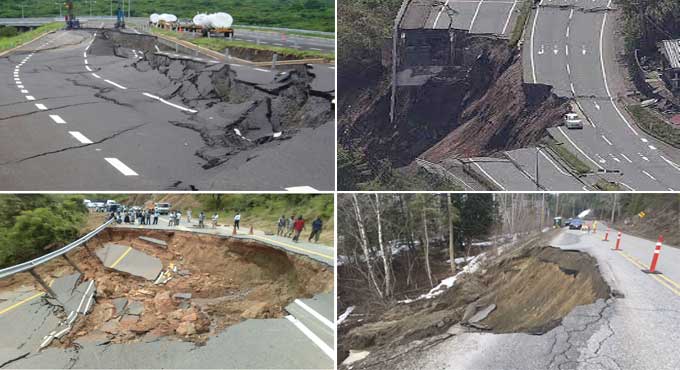NEWS | SOFTWARE | SHEET
Identifying the Types and Causes of Slope Failures
In natural structures, slopes in soils and rocks are ubiquitous. It is cheaper to slope the sides of soil to build highways, levees, canals, and stockpiles than to construct walls. Natural landslides have claimed many lives and caused a lot of damage.
Some failures are catastrophic and sudden, as well as insidious. Others are localized, while others are widespread.
Causes of Slope Failure
1. Earthquakes: The shear forces induced by earthquakes reduce the stability and strength of the soil during earthquakes, especially in the event of dynamic shear. More than the total stress may exert on saturated coarse-grained soils, this phenomenon refers to as dynamic liquefaction. Buildings buried in these soils would crumble. Even coarse-grained soils cannot drain excess pore-water pressures due to the quickness with which dynamic forces induce. Un-drained slopes often fail during seismic events.
2. Erosion: The wind and water continually erode the slopes of natural and manmade surfaces. As a consequence of erosion, a slope will fail or a landslide will occur. The scouring of rivers and streams undermines the natural or manmade slopes of their banks.
3. Rainfall: Soils are saturated, softened, and eroded by prolonged rainfall. As a result of water entering cracks and weakening the underlying layers, slope failure may occur, leading to mudslides, for instance.
4. Construction Activities: As construction projects carry out near a slope's toe, lateral resistance can remove, causing failure. Construction activities lead to slope failures in two different ways. A slope excavated is one case, whereas a slope filled with dirt is another.
5. External Loading: Loads placed on crests of slopes or the top of slopes can increase the gravity load and cause the slope to fail. The stability of a slope can increase by placing a load at the toe, also called a berm. Problem slopes often remediate with berm.
6. Geological Features: Unidentified geological features are often the cause of many failures. During drilling operations, a thin seam of silt can easily be overlooked under an overly thick deposit of clay. A borehole log may be carelessly assessed, and afterward, the presence of silt is found to have caused a catastrophic failure.
The translational slide is common with sloping and stratified soils. When assessing slope stability, you need to pay particular attention to geological features.
Slope Failure’s Technical Issue
The result of a failure zone is the movement of the upper soil mass, which results in reaching the critical state. It is the surface of sliding that is the failure plane. In slip planes and on ground surfaces, sliding mass refers to soil subsurface.
A slope's inclination angle to the horizontal is defined as its slope angle. Ratios sometimes use to describe slope angles. A pore water pressure ratio measures the difference between the pore water force on a slip surface and the total weight of the soil and any external loads.
Types of Slope Failure
1. Rotational Slide: Rotational slides with their central point of rotation parallel to a slope are common types of soil failure in homogeneous fine-grained soils.
2. Translational Slide: A translational slide occurs when a slope fails along a weak zone of the soil. After sliding for a considerable amount of distance, the mass can rest. Coarse-grained soils are prone to translational slides.
3. Wedge Slide: When adjacent soils exert force on a soil mass along joints, seams, fissures, and weak zones, a block or wedge slide is created. Scattered blocks move as wedges down the slope.
4. Flow Slide: Soil behaves like a viscous fluid and slides down steep slopes, spreading out in numerous directions in a flow slide. Flow slides have an ill-defined failure surface. The failure surface changes continuously as the flow proceeds. It is possible to slide in wet and dry soil.
To get more clear ideas, go through the following exclusive construction video tutorial.
Lecturer: Geo-JuanP
Recommended Articles:
Geometric Design of Highway Engineering


